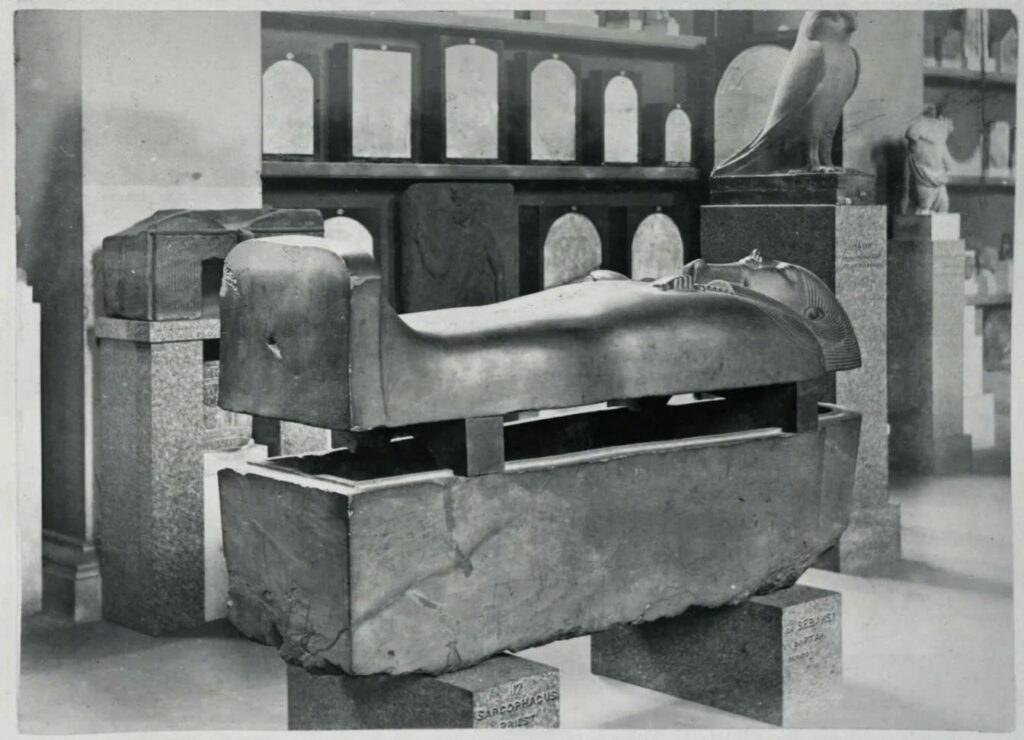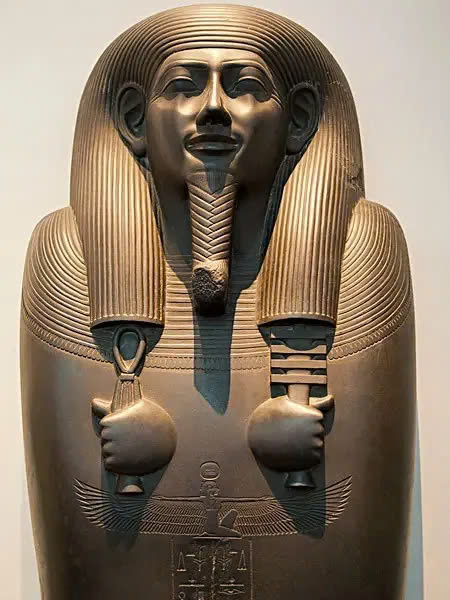Unveiling the Secrets of a Late Period Treasure

In the hallowed halls of the British Museum lies a remarkable artifact that whispers tales of ancient Egypt’s grandeur. The sarcophagus of Vizier Sasobek, a high-ranking official during the reign of Pharaoh Psamtik I, stands as a testament to the artistry and beliefs of the 26th Dynasty.
A Glimpse into Egyptian Nobility

This exquisite sarcophagus, crafted from black siltstone, is believed to have originated from Sais, the ancestral city of Psamtik’s family. Its anthropoid design, mirroring the human form, showcases the pinnacle of Late Period funerary art. The lid, a masterpiece in its own right, depicts Sasobek adorned with a wig, beard, and collar, while two vertical registers of hieroglyphic offering texts flank his figure, crowned by an image of the sky goddess Nut.
Symbolism and Craftsmanship

What sets this sarcophagus apart is its exceptional preservation and the naturalistic rendering of Sasobek’s features. Unlike many anthropoid sarcophagi with exaggerated characteristics, Sasobek’s visage exudes serenity and lifelike qualities. In his hands, he clutches powerful symbols of Egyptian mythology: the djed pillar representing Osiris, god of the afterlife, and the tyet knot associated with Isis, embodiment of motherhood and protection.
The Evolution of Egyptian Burial Practices
From Stone to Human Form

The use of stone sarcophagi in Egypt dates back to the dawn of the Old Kingdom, around 2613 BC. However, the concept of human-shaped containers for the deceased didn’t emerge until the Middle Kingdom (circa 2040-1750 BC), initially crafted only in wood. It wasn’t until the New Kingdom (about 1550-1070 BC) that stone anthropoid sarcophagi came into use, reserved exclusively for individuals of the highest rank, including royalty.
A Legacy Preserved

Now housed in the British Museum under the designation EA17, Sasobek’s sarcophagus continues to captivate visitors and scholars alike. This magnificent artifact not only showcases the skill of ancient Egyptian artisans but also provides invaluable insights into the funerary practices and beliefs of a civilization that continues to fascinate us millennia later.
